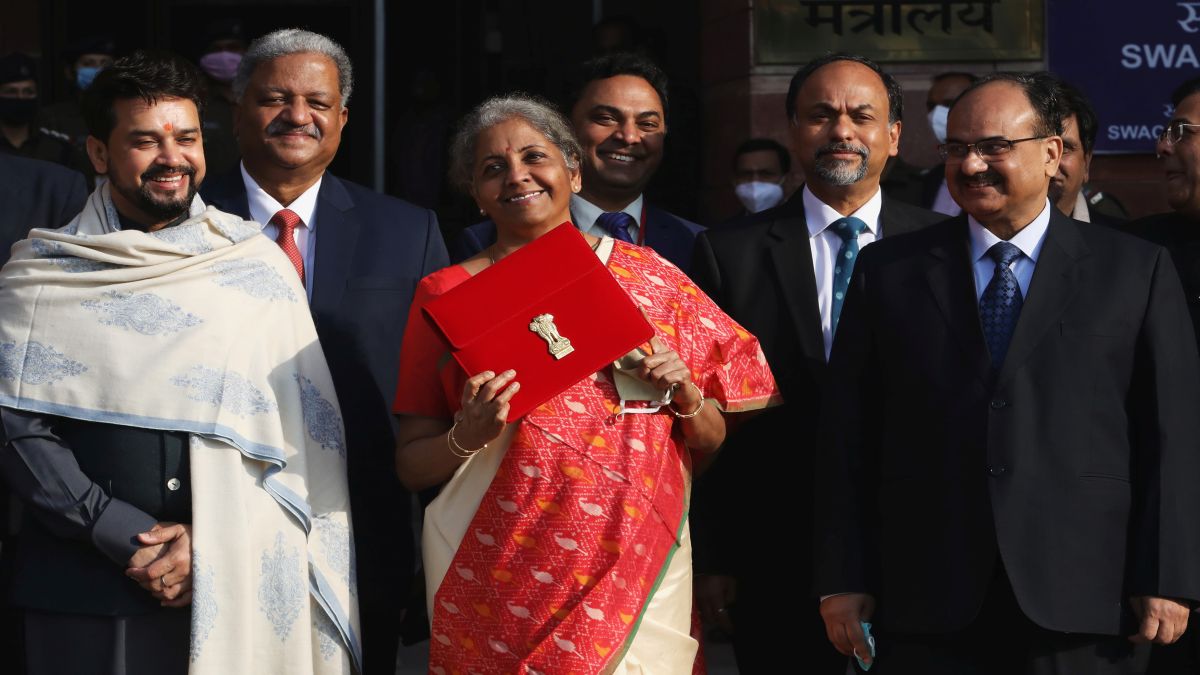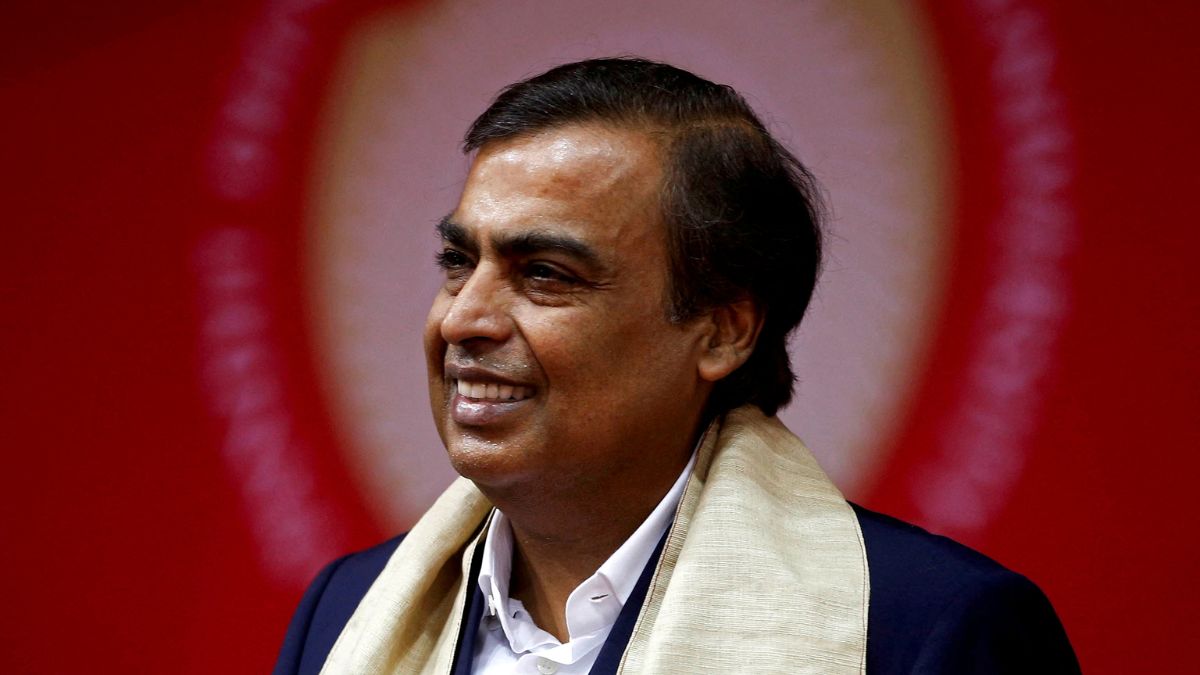Defence, healthcare, sustainability, technology, and tax reforms have been major themes in national budgets in several countries. How does India’s focus and it allocation to these areas compare to countries like US, China, and Japan? Here’s an expert’s take on it read more
)
Finance Minister Nirmala Sitharaman holds up a folder with the Government of India logo, as India's Chief Economic Advisor Krishnamurthy Subramanian and Minister of State for Finance and Corporate Affairs Anurag Thakur look on as she leaves her office to present the budget in 2021. File image/Reuters
National budgets are more than just ledgers of numbers; they reflect a government’s priorities and serve as a roadmap for policy ambitions. As the Indian Union budget looms on the horizon, its announcement carries significant weight, shaping not only the market dynamics and public policy but also the contours of personal finance.
The concept of a structured budget was pioneered by Britain with the establishment of the Exchequer in 1160, evolving into the more formal Annual Financial Statement in the 19th century. Today, the budget process involves legislative approvals in annual cycles. In India, the process begins with extensive pre-budget consultations involving a wide array of stakeholders, from ministry officials to economic experts, to ensure the budget reflects diverse perspectives and needs.
Defence budget rising
Historically, defence has been a significant part of government expenditure among the top global economies. The US spends about 15 per cent of its budget on defence, significantly more than other top economies, which spend between 1-8 per cent.
According to SIPRI, global military expenditure increased by 6.3 per cent in 2023 to $2.4 trillion, driven by the ongoing war in Ukraine and escalating tensions in West Asia. In 2023-24, India allocated Rs 5.9 trillion (approximately $71 billion) to defence, marking over 10 per cent increase from the 2019-20 budget, emphasising modernisation and integration of military capabilities.
Post-pandemic trends in healthcare budgets
The COVID pandemic triggered a surge in global health spending. In 2021, the WHO reported that global health spending continued to rise, reaching $9.8 trillion or 10.3 per cent of global GDP. However, the sustainability of such spending is unclear, particularly in lower-income countries facing rising debt burdens and fiscal constraints.
While developed countries typically spend about 8-18 per cent of their GDP on healthcare, India’s spending has been around 1.5-1.8 per cent. From 2012-13 to 2023-24, the budget for the healthcare has consistently grown at an annual rate of 12 per cent. Efforts to increase healthcare spending in India continue, focusing on expanding insurance coverage through schemes like PMJAY – world’s largest insurance scheme - which offers up to Rs 5 lakh per family per year for secondary and tertiary care.
Sustainability push
Sustainability efforts are gaining traction within governmental budgets, reflecting a collective aspiration to mitigate environmental impacts and adapt to climate change. Though exact allocations are difficult to compute, significant expenditures indicate the scale of impact. In 2021, the US announced the Build Back Better plan, with a $555 billion package of tax credits, grants, and other incentives to curb greenhouse gas emissions.
In 2022, Japan has allocated approximately $2.5 billion to develop EV batteries and reduce reliance on rare earth elements. China is heavily investing in renewable energies and technologies to reduce carbon emissions as part of its carbon neutrality goal by 2060. India allocated Rs 35,000 crore (approximately $4.4 billion) for energy transition and net zero objectives by 2070.
Global focus on tech, AI
Most notably, budget allocations for technology have increased significantly. The pandemic served as a crucial catalyst, propelling digital investments. Advances in AI, especially generative AI, have led to increased spending to future-proof economies and capitalise on the AI revolution.
For instance, the US government budgeted over $6 billion in 2021 for AI across different agencies, while the European Union has committed approximately €93.5 billion between 2021-27 through Horizon Europe for AI research and innovation.
The Indian government has approved a budget outlay of Rs 10,372 crore (approximately $1.25 billion) for the India AI Mission over the next five years, aimed at driving AI innovation, ethical growth, and technological sovereignty, positioning India as a significant player in the global AI landscape.
Move towards tax system simplification
Finally, budget announcements often include important updates about taxes. Globally, there’s a trend towards simplifying personal income tax systems to ease compliance and foster economic growth. The 2022 Polish deal has lowered the tax burden benefitting lower-income employees and older workers, while it has increased the tax wedge for higher-income self-employed.
In the US, proposed reforms like the federal flat tax aim to dramatically simplify the tax code by merging multiple brackets into a single flat rate, thereby reducing tax compliance complexity and costs. Similarly, India has introduced a new tax regime with lower rates and fewer exemptions, simplifying its tax system and streamlining compliance.
Budget 2024 in the global context
As India’s Finance Minister announces the budget on July 23rd, she will attempt to balance India’s domestic policy goals against the backdrop of these global trends in health, sustainability, and technology. One can expect that efforts to achieve India’s 2070 Net Zero target would include investments to enhance the affordability of electric and alternative fuel vehicles, bolster renewable energy like solar and wind, and promote green hydrogen and battery technologies.
The focus on AI and technology will likely support infrastructure development in computing and semiconductor manufacturing. Reskilling in areas from data analytics to automation will be emphasised. GST reforms may optimise tax slabs and reduce rates, especially for sustainability-linked industries.
As India prepares for its budget announcement, it represents more than a financial statement; it’s a profound declaration of India’s approach to becoming a developed nation and leading power by 2047 – a vision that intertwines national aspiration with global relevance.
Vivek Agarwal is a global policy expert and Country Director (India), Tony Blair Institute of Global Change. Views expressed in the above piece are personal and solely those of the author. They do not necessarily reflect Firstpost’s views.

 1 month ago
13
1 month ago
13
)
)
)
)
)
)
)
)
)
)
)
)
)
)
)
)
)
)
)
)
)
)
)
 English (US) ·
English (US) ·